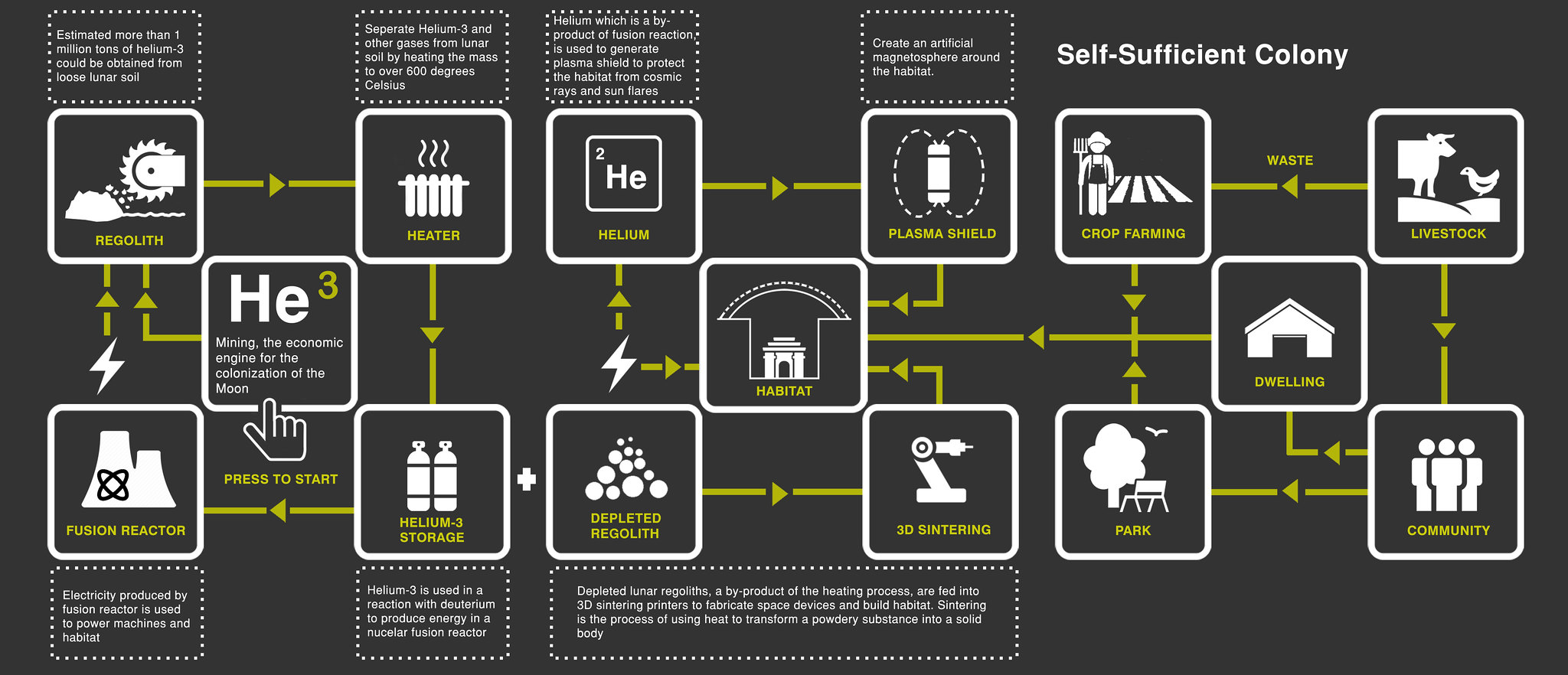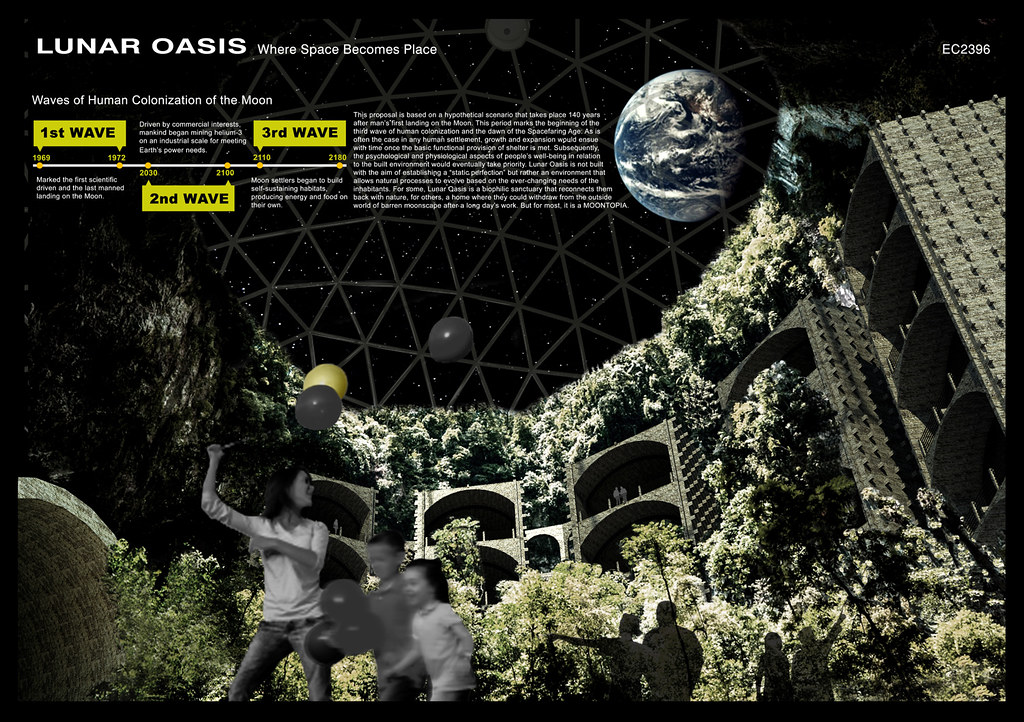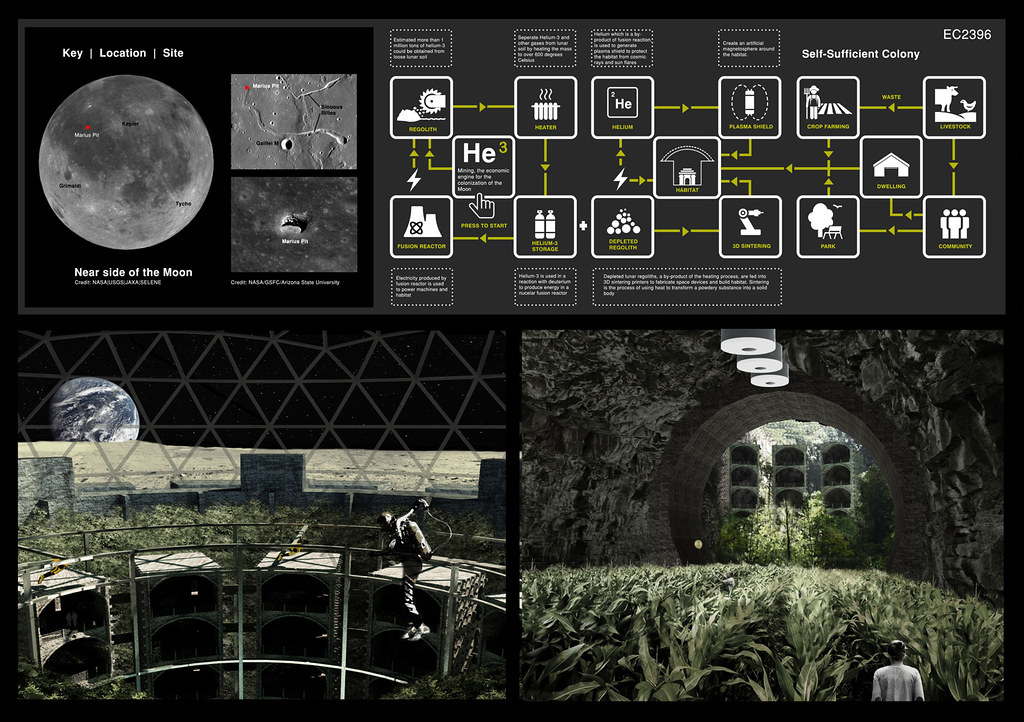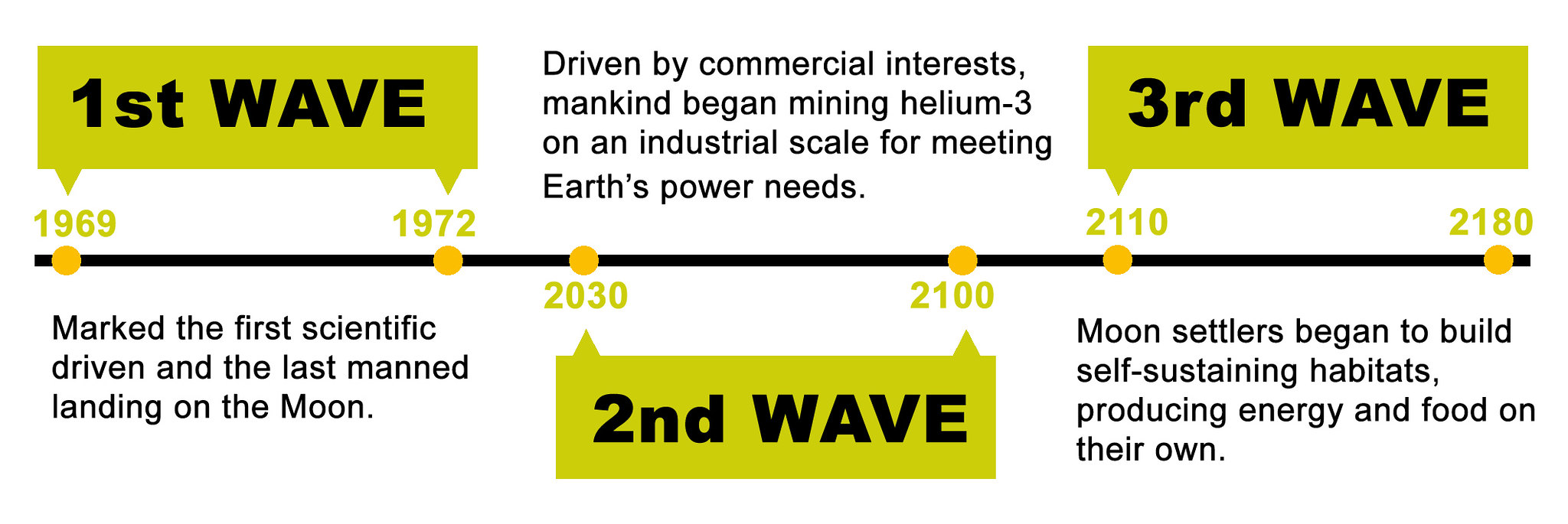LUNAR OASIS Where Space Becomes Place
Waves of Human Colonization of the Moon
This proposal is based on a hypothetical scenario that takes place 140 years after man’s first landing on the Moon. This period marks the beginning of the third wave of human colonization and the dawn of the Spacefaring Age. As is often the case in any human settlement, growth and expansion would ensue with time once the basic functional provision of shelter is met. Subsequently, the psychological and physiological aspects of people’s well-being in relation to the built environment would eventually take priority.

Concept diagram

The Year 2110: The Making of Lunar Oasis
After decades of mining and living in a sterile and industrial-like environment on the lunar surface, the descendants of the early colonists who previously sought refuge inside the subterranean caverns of Marius Hills pit and lava tube from the harmful cosmic radiation and extremes in temperature, began to expand and develop their subterranean habitat into a more conducive settlement with adequate recreational facilities and dwelling spaces.
With the availability of advance construction technologies at disposal, the colonists were able to terraform the habitat on a microscale level by deploying an inflated geodesic dome structure over the pit’s opening, and by sealing the lava tube with inflatable membranes which can be deployed at interval as the colony expands and grows subterraneanly.
Advances in sintering technology and sintering mechanisms of regolith dust, a leftover debris of Helium-3 extraction process in the mining industry, have made it possible to stabilize and seal cracks that occur from time to time on the interior surface of the lava tube so as to ensure that the habitat is constantly being kept airtight. The same sintering technology was also being used to construct buildings in the habitat.

To further enhance the habitability of the habitat, the colonists have “greened” the caverns with plenty of plants and trees. As time passed, the habitat soon became a self-sustaining settlement, growing its own crops and raising its own livestock - all were made possible by the abundance and availability of fusion energy, generated and supplied from a nearby fusion reactor.
Ground vehicular traffic is not allowed inside the caverns as the primary mass transit is available and restricted to lunar surface only. The clustering of buildings at the peripheral wall of Marius Hills pit and around a central green park offers a spectacular view of the Planet Earth as it moves across the sky. Coupled with pedestrian-centric approach and people-oriented spaces, such concentric spatial arrangement has made it easy for the colonists to socialize, mingle and develop a deeper sense of place-identity.
A Place to Call Home
Lunar Oasis is not built with the aim of establishing a “static perfection” but rather an environment that allows natural processes to evolve based on the ever-changing needs of the inhabitants. For some, Lunar Oasis is a biophilic sanctuary that reconnects them back with nature, for others, a home where they could withdraw from the outside world of barren moonscape after a long day’s work. But for most, it is a Moontopia.
~ End ~
Lunar Oasis received an HONORABLE MENTION in the Eleven Magazine’s MOONTOPIA Competition.
As Featured On:
 |
 |
 |

